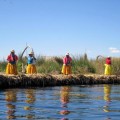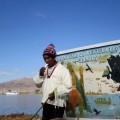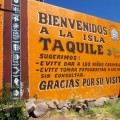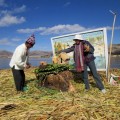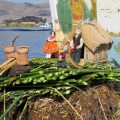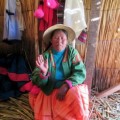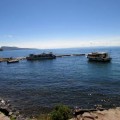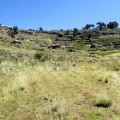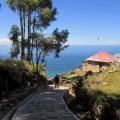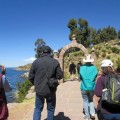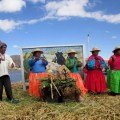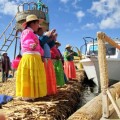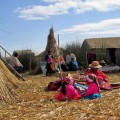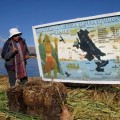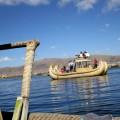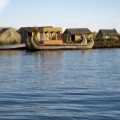At 12500 feet above sea level, Lake Titicaca is the highest navigable lake in the world. The tour started at a “floating island” of totora reeds — Islas Ios Uros. The guide, assisted by a man from the village, gave a lecture on the history and lifestyle of the people. It was all cut and dry talk, but sometimes humorous, a backgrounder on Lake Titicaca and the Aynmara and Quechua people who have lived there for hundreds of years. The women were called to sing a couple of songs in their ancient language. Then, the guide announced that they were going to sing a translation. They broke into “My bonnie lies over the ocean.” Later, as the tour group sailed down on one of the reed boats, the women sang, ” Row, row, row your boat.” Some of us in the group laughed. Next stop on the lake tour was Taquile Island. The boat anchored and we all shuffled up the steep incline to the top where we had our lunch of grilled trout and potato chips. I decided to jump in the water as a friend suggested. I left the group, walked down to the water, took off my clothes and plunged in. The water was frigid. A man took photos of me. I saw the photos later before my camera got lost or stolen. One photo showed me in the water with the sunlight shimmering around me. The next day, on a trip to Sillustani, my guide George
Washington said that swimming in the water of Lake Titicaca is a ritual of cleansing and healing. In Mount Banahaw, the holy mountain south of Manila in the Philippines, the pilgrim stands under the waterfall and bathes in the river at the bottom of the mountain in the act of purification before s/he goes up to the different stations to light a candle in each
spot. The symbolic descent and washing are part of the rituals all over the world.
